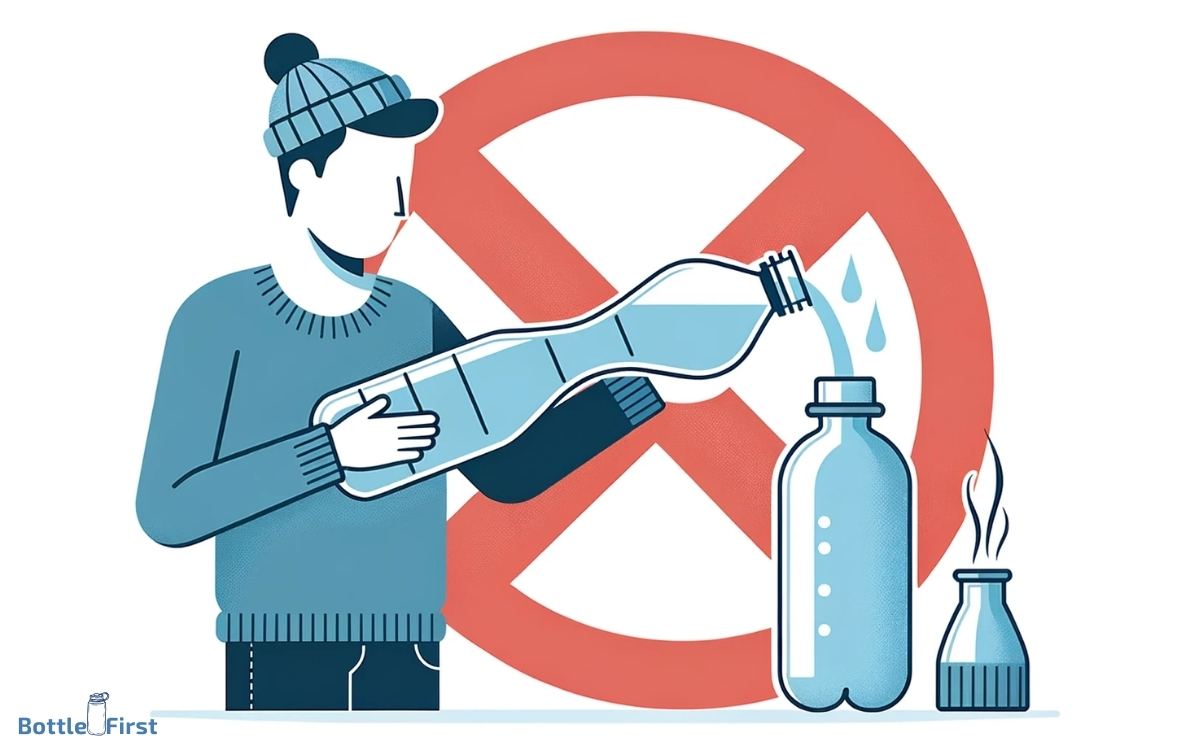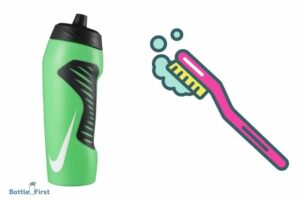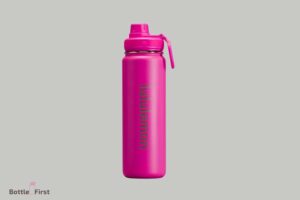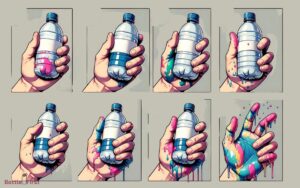Do You Put Boiling Water in a Hot Water Bottle? No!
No, you should not use boiling water in a hot water bottle. Instead, use hot, but not boiling, water to fill your bottle safely.
Pouring boiling water into a hot water bottle can cause the material to weaken, deteriorate, or even burst, leading to potential injury.
Manufacturers generally recommend using water that’s been boiled and allowed to cool down for a few minutes.
This ensures the water is still hot enough to provide warmth, but not so hot that it poses a risk to the bottle’s integrity or your safety.
Ensuring the correct water temperature prolongs the life of your hot water bottle and keeps you safe from burns.
Are you contemplating whether to fill your hot water bottle with boiling water? It’s essential to understand the right temperature to avoid damaging the bottle and to ensure your safety. A hot water bottle provides comfort, but it must be used correctly.

Key Takeaway
Ideal Water Temperature for Hot Water Bottles
When filling a hot water bottle, you should use water that has just boiled and then allow it to cool for a few minutes.
This ensures that the water is at an ideal temperature for the hot water bottle, providing the right amount of warmth without posing a risk of scalding.
The recommended water temperature for filling a hot water bottle is around 140°F (60°C). This temperature is hot enough to provide soothing warmth, but not so hot that it could cause burns or discomfort.
Using water that’s too hot can damage the hot water bottle and increase the risk of burns, while water that isn’t hot enough may not provide the desired warmth.
It’s important to take these precautions to ensure a safe and effective experience when using a hot water bottle.
Moving on to safety precautions when filling a hot water bottle, it’s important to consider…
Safety Precautions When Filling a Hot Water Bottle
When filling a hot water bottle, it’s important to use water at a safe temperature to avoid burns or damage to the bottle.
Always follow proper filling techniques to prevent leaks or spills.
Be mindful of the material and maintenance instructions to ensure the bottle’s longevity and safety.
Water Temperature Safety
First, ensure the water is not boiling but at a safe temperature before filling your hot water bottle.
Using boiling water can cause the rubber to weaken and potentially lead to leaks or burns. It is recommended to use water that is no hotter than 140°F (60°C).
Here are some safety precautions to keep in mind when filling a hot water bottle:
| Safety Precaution | Description |
|---|---|
| Use a Cover or Towel | Always use a cover or wrap the hot water bottle in a towel to prevent direct contact with your skin. |
| Check for Leaks | Before using, check the hot water bottle for any leaks or cracks to avoid potential burns or accidents. |
| Replace When Damaged | If the hot water bottle shows signs of wear and tear, it’s essential to replace it to ensure safety. |
Proper Filling Techniques
To ensure the safe usage of a hot water bottle, always fill it with water that’s at a safe temperature, and follow proper filling techniques to prevent accidents or injuries.
When filling the hot water bottle, use water that’s between 122°F to 140°F (50°C to 60°C) to avoid scalding or burns. Avoid using boiling water as it can cause the bottle to weaken and leak.
Hold the bottle upright and slowly fill it to about two-thirds full to allow room for expansion and prevent leaks. Be cautious not to overfill or tightly screw the cap, as this can cause the bottle to burst.
Always use a cloth or towel to handle the hot water bottle to prevent burns. By following these filling techniques, you can ensure safe and effective use of your hot water bottle.
Transitioning into the subsequent section about ‘material and maintenance’, it’s important to also consider the type of hot water bottle material and proper maintenance for prolonged use and safety.
Material and Maintenance
Ensure the durability and safety of your hot water bottle by prioritizing proper material and maintenance. When filling your hot water bottle, it’s important to follow safety precautions to prevent accidents and ensure its longevity.
Here are some essential tips to keep in mind:
- Use a hot water bottle made of high-quality, durable materials to prevent leaks or ruptures.
- Inspect your hot water bottle regularly for any signs of wear and tear, such as cracks or damage to the stopper.
Always follow the manufacturer’s guidelines for filling the hot water bottle to avoid overfilling or using water that’s too hot.
- When not in use, store your hot water bottle in a cool, dry place away from direct sunlight or heat sources.
- Replace your hot water bottle if it shows any signs of deterioration to maintain safety and effectiveness.
Tips for Filling a Hot Water Bottle
When filling a hot water bottle, it’s important to ensure that the water isn’t boiling, as this can cause damage to the bottle and potential burns to your skin.
Use hot tap water instead, as it’s the safest option. Fill the bottle to about two-thirds of its capacity, leaving some room for expansion to prevent leaks. Be careful not to overfill, as this can also lead to leakage and burns.
When securing the stopper, make sure it’s tightly sealed to avoid any water seepage. Always check for any signs of wear and tear on the bottle, such as cracks or weak spots, before filling it with water.
Following these simple tips will help ensure a safe and effective experience when using a hot water bottle.
Common Misconceptions About Hot Water Bottle Filling
There is a common misconception that filling a hot water bottle with boiling water is safe, but it can actually cause damage to the bottle and potential burns to your skin.
To ensure safe usage, it’s essential to understand the following:
- Optimal Temperature: Use water that’s between 122°F to 140°F for filling the hot water bottle.
- Avoid Boiling Water: Boiling water can weaken the rubber of the bottle and make it more susceptible to leaks.
- Allow Cooling Time: After boiling water, let it cool for a few minutes before pouring it into the hot water bottle.
- Check for Leaks: Before use, inspect the bottle for any signs of damage or wear to prevent leaks and burns.
- Secure Cap: Always make sure the cap is tightly secured to prevent any accidental spills or leaks.
Transitioning into the subsequent section about ‘using hot water bottles for pain relief’, it’s important to understand the proper methods for safe and effective relief.
Using Hot Water Bottles for Pain Relief
If you suffer from muscle aches or menstrual cramps, using a hot water bottle can provide relief. It’s important to ensure the water temperature is safe, typically around 140°F, and to follow recommended heat duration guidelines.
Hot water bottles can offer targeted heat therapy, promoting relaxation and easing discomfort.
Safe Water Temperature
You should use warm, not boiling, water when filling a hot water bottle for pain relief. Using boiling water can cause burns and damage the hot water bottle.
Here are some tips for safe water temperature:
- Warm, not hot: The water should be comfortably warm to the touch, not hot enough to scald your skin.
- Test the temperature: Before filling the hot water bottle, test the temperature of the water with your hand to ensure it’s not too hot.
- Maintain a safe distance: Keep a safe distance from the hot water bottle when filled to prevent accidental burns.
- Check for leaks: Ensure the hot water bottle doesn’t leak, as hot water can cause serious burns if it comes into contact with the skin.
- Replace when worn: If the hot water bottle shows signs of wear or damage, it’s essential to replace it to prevent leaks and injuries.
Heat Duration Guidelines
When using a hot water bottle for pain relief, it’s important to know how long you can safely apply heat to the affected area. Heat duration guidelines are essential to prevent burns and other potential issues.
For most adults, it’s generally safe to apply a hot water bottle for 15 to 20 minutes at a time. It’s advisable to wrap the hot water bottle in a towel to avoid direct contact with the skin and to check the skin periodically for any signs of irritation.
For children, the duration should be shorter, around 10 to 15 minutes. It’s crucial to follow these guidelines to ensure safe and effective pain relief without causing any harm to the skin.
Understanding these guidelines will help you make the most of your hot water bottle for pain relief.
Benefits for Pain Relief
Reaping the benefits of pain relief with hot water bottles requires adhering to the recommended heat duration guidelines to prevent burns and ensure safe and effective relief.
Using hot water bottles for pain relief can provide comfort and alleviate various types of discomfort.
Here are some benefits you can enjoy:
- Targeted heat therapy for localized pain
- Improved blood circulation to reduce muscle tension
- Natural, drug-free pain relief option
- Relaxation and stress reduction
- Cost-effective and reusable solution
When used properly, hot water bottles can be a valuable tool for managing pain and promoting relaxation. However, it’s essential to seal them correctly to avoid any leaks or accidents.
Now, let’s delve into how to properly seal a hot water bottle.
How to Properly Seal a Hot Water Bottle
To ensure proper sealing, start by carefully screwing the cap onto the hot water bottle until it’s snug but not overly tight.
Make sure the rubber washer is in place and the threads are aligned properly before tightening. Avoid over-tightening, as this can cause the bottle to distort or the cap to leak.
Test the seal by gently squeezing the bottle to check for any leaks or air escaping. If there are no leaks, the hot water bottle is properly sealed and ready to use.
Remember to always follow the manufacturer’s guidelines for your specific hot water bottle to ensure proper sealing and safety.
Proper sealing not only prevents leaks but also ensures that the hot water bottle retains heat effectively for longer periods, providing you with lasting comfort.
Cleaning and Maintaining Your Hot Water Bottle
After properly sealing your hot water bottle, you should regularly clean and maintain it to ensure its longevity and effectiveness.
Here are some tips to help you keep your hot water bottle in good condition:
- Wash the bottle with mild soap and lukewarm water after each use.
- Rinse it thoroughly and let it air dry with the stopper removed.
Inspect the bottle for any signs of wear and tear, such as cracks or leaks. – Store the bottle in a cool, dry place away from direct sunlight. – Replace the bottle if it shows any damage or deterioration.
Conclusion
So, next time you need to fill a hot water bottle, remember to use water that’s around 140°F (60°C) for optimal warmth and comfort.
Safety is key, so always handle it with care and use a cover to prevent burns.
Did you know that hot water bottles have been used for pain relief for over 100 years?
It’s amazing how such a simple invention continues to provide comfort and relief to so many people.






